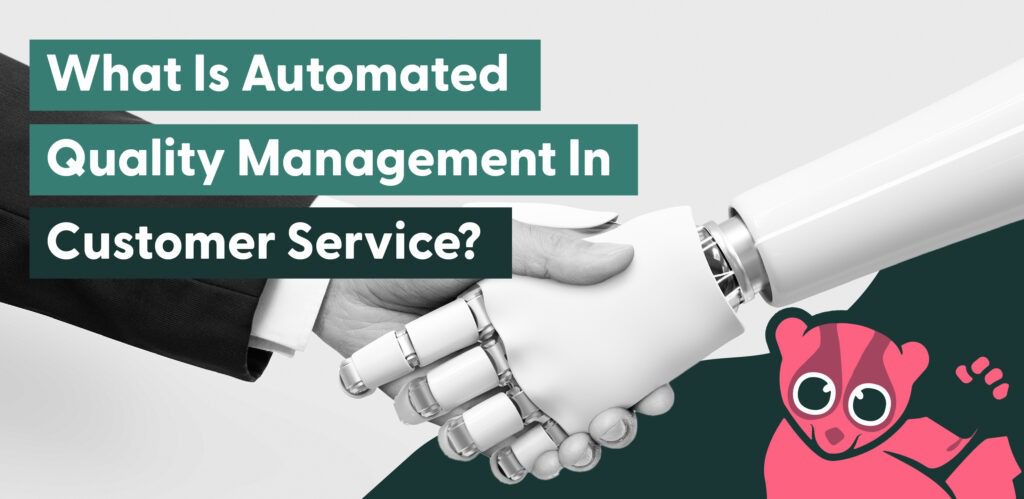
Great customer service, quality, and experience aren’t simply goals for your business. They’re the currency by which organizations provide value to their customers.
However, these goals aren’t always easy to measure, especially if you’re using a traditional quality assurance (QA) approach.
A traditional approach involves spot-checking call, chat, and email transcripts manually. It also means scoring your agents and trying to analyze data yourself.
But is random sampling, scoring, and analysis good enough to measure quality?
Automated quality management promises to make manual QA a thing of the past. But does it actually work?
In this article, we’ll explore what automated quality management is, how it can benefit your business, and how to choose the right tools to see the best results.
Table of Contents
What Is Automated Quality Management in Customer Service (CS)?
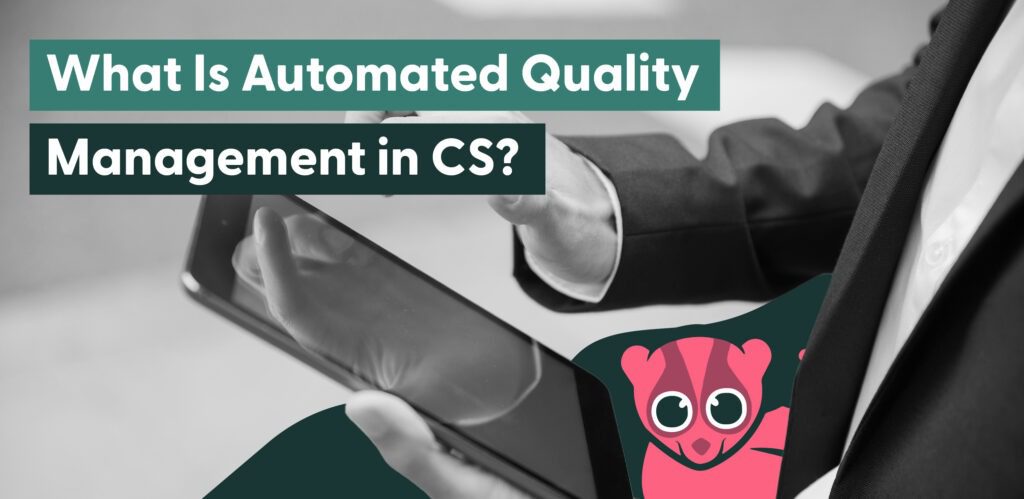
Automated quality management in customer service (CS) refers to using software to assess, monitor, and evaluate the quality of interactions with your customers.
The idea behind this approach is to streamline the quality management process, reduce bias when assessing agents, and improve the overall quality of customer service interactions.
Automated quality assurance includes all elements of customer experience (CX), from phone conversations to live chats and emails.
The assessment is performed by a QA analyst using predefined criteria and key performance indicators (KPIs) to assess the effectiveness of customer service interactions.
This is typically done using a scorecard, which is a list of various criteria. These criteria cover factors like response time, problem resolution, adherence to scripts, and overall customer satisfaction.
The Benefits of Automating Quality Assurance
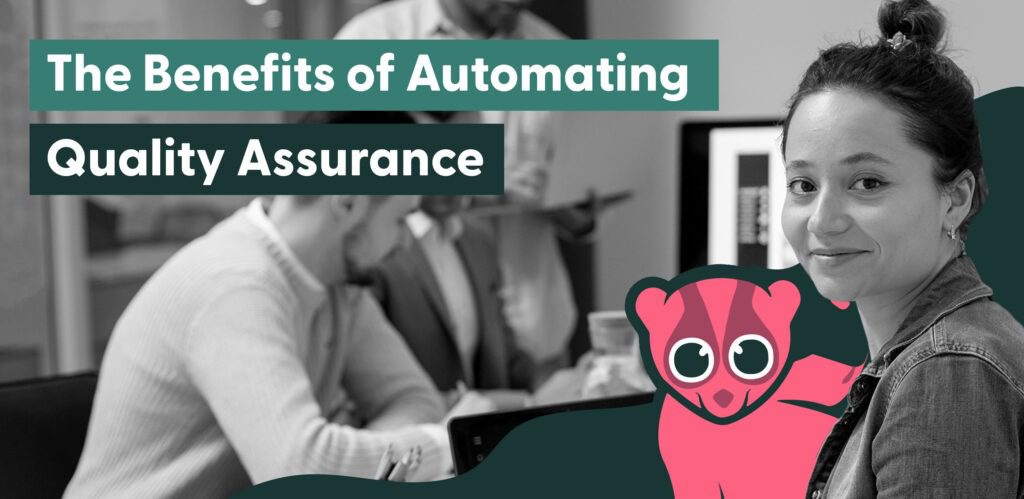
If you don’t already have a QA process in place, you may be wondering if you really need one—let alone an automated QA program.
The short answer is—that depends. There are a number of direct and indirect benefits to QA, which I’ve laid out below:
✅ Consistency
Automated quality management ensures customer service representatives adhere to predefined standards and consistently provide quality service.
✅ Efficiency
Automated quality management systems and tools enable rapid and comprehensive evaluation of customer conversations. This significantly reduces the time required for quality assessments.
It shortens the time to issue identification and can improve agent performance and ramp time, too.
✅ Objective assessment
Automated QA relies on predefined criteria, making the evaluation process objective and free from human bias.
Additionally, automated quality management tools have universal scoring criteria, like a conversational quality (CQ) score. They analyze each conversation equally before it’s even seen by an analyst.
💡 Never heard of a CQ score?
A conversational quality score is a metric that determines a customer’s perspective of a CS interaction. Check out our full guide to conversational quality to learn more.
✅ Real-time customer feedback
Automated quality management can use real-time interaction assessments to provide agents with immediate feedback and identify wider business issues as they arise.
✅ Scalability
Automated QA can efficiently scale to handle a large volume of customer interactions, making it ideal for businesses with growing customer bases.
Similar to agent efficiency, it enables your QA analysts to do more higher-quality evaluations in less time.
✅ Data-driven insights
This is the latest trend in QA and perhaps the most beneficial to businesses as a whole. The data collected through automated quality management provides valuable insights for:
- Improving customer service operations.
- Identifying agent coaching needs and opportunities.
- Enhancing customer experiences.
It can also identify product issues, policies that your customers don’t understand, or other points of friction in the customer journey.
These are the elements you may never find in a survey, as customers may not know how to articulate them until they have a problem.
The Different Approaches to Quality Management

Here’s where it gets interesting. While all the above sounds relatively straightforward, there are different types of quality management. There are four main approaches to QA:
➡️ Manual quality management
If you’re reading through transcripts and using a Google Form, Google Sheets, or Google Doc—or their Microsoft equivalent—you might be doing manual QA.
This approach takes a lot of time and only really samples between 2 and 5% of all customer interactions.
Your analysts use some kind of document, form, or spreadsheet to score each conversation, and that data is often never to be seen again.
This means you don’t have an accurate view of agents or your overall customer service operation.
Your QA analysts may spend a lot of time listening to phone calls to capture what they need. We’ve heard of businesses spending 20 minutes to score a six-minute phone call. Yikes!
➡️ Digital quality management
While this sounds like a step up, it’s really just a more advanced method of manual QA.
There is still sampling, but customer interactions like phone calls, chats, and emails are assigned automatically instead of picked by a QA Manager. This is what constitutes the ‘automated’ label.
Other than that, these tools provide minimal reporting, perhaps some trend data based on keyword searching, but nothing in the realm of what we would call artificial intelligence (AI) today.
➡️ AI quality management
Ah, AI. All your QA problems are solved with no worries! What could go wrong?
These tools may sound new, but most have been around for a few years, meaning they’ve built their platforms on a dated approach. They also take a long time to learn what good quality management looks like.
This could involve multi-month implementation and a process of updating each individual criteria or line item within a scorecard.
Most incorporate human feedback in order to train the model, so that is partially why AI training is so tedious.
Organizations often remove human analysts once the AI is trained, so it’s hard to understand whether everything is being scored correctly.
Another note on these tools is their focus on either specific channels—often voice—and use cases. Many of these tools are more for sales than customer service.
➡️ AI-enhanced quality management
If you thought AI QA was the pinnacle, I have one more for you. This approach balances what AI is good at, namely:
- Identifying trends within large sets of data.
- Learning what QA analysts are good at.
- Understanding context.
The methodology here is to analyze all interactions using AI and provide recommendations and insights to analysts to speed up reviews.
It’s the best of both worlds: broad insights, objective analysis, and the understanding of human customer service experts.
How to Choose Automated Quality Management Software for Your Contact Center
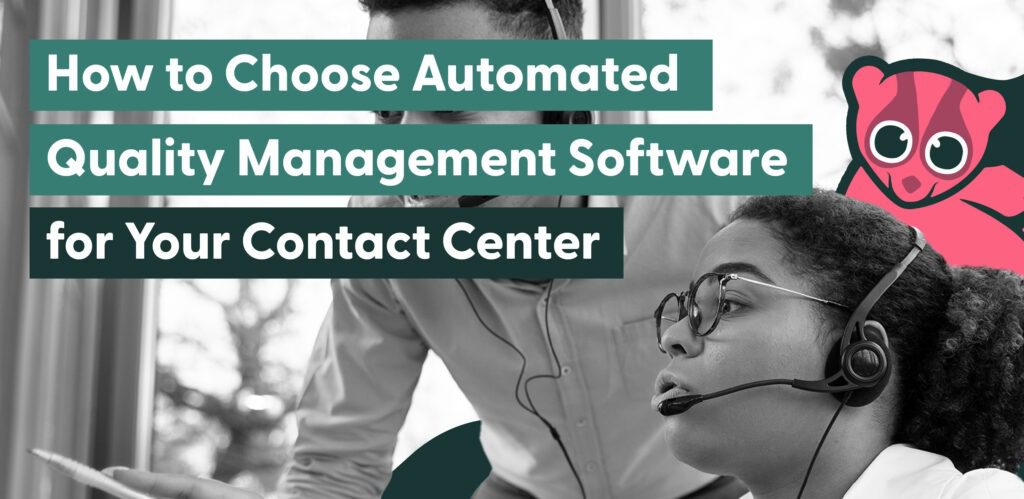
How do contact centers like yours choose the right quality monitoring software? Here are some tips to get you started:
👉 Assess your needs
Identify the specific needs of your business by evaluating your current quality assurance process. This will help you find gaps and areas of improvement that automated quality management software can help with.
For example, do you need to keep customers coming back, so consistency is important? Are you growing, so efficiency and scalability are critical?
👉 Features and functionality
Ensure the software includes core features that allow you to customize the system to suit your specific business and contact center processes.
Choose a solution that can grow and scale with your business and handle increasing volumes of customer interactions.
👉 User-friendliness
You want the platform you choose to have an intuitive interface that is easy for your customer service team to use without extensive training. This will enhance employee adoption.
👉 Compliance
Check if the software complies with relevant industry regulations and standards, especially when it comes to customer data protection and privacy.
👉 See (or try) before you buy
Look for platforms that offer demos or product walkthroughs so you can get a real idea of how the software would work in your business.
👉 Measure success
Once you’ve implemented a new automated quality management system, you need to evaluate whether it’s doing the job you expected it to.
Has it improved your customer satisfaction (CSAT) scores? Is your first call resolution (FCR) better than it was before?
Start with Insights, Improve Service Quality (and More)
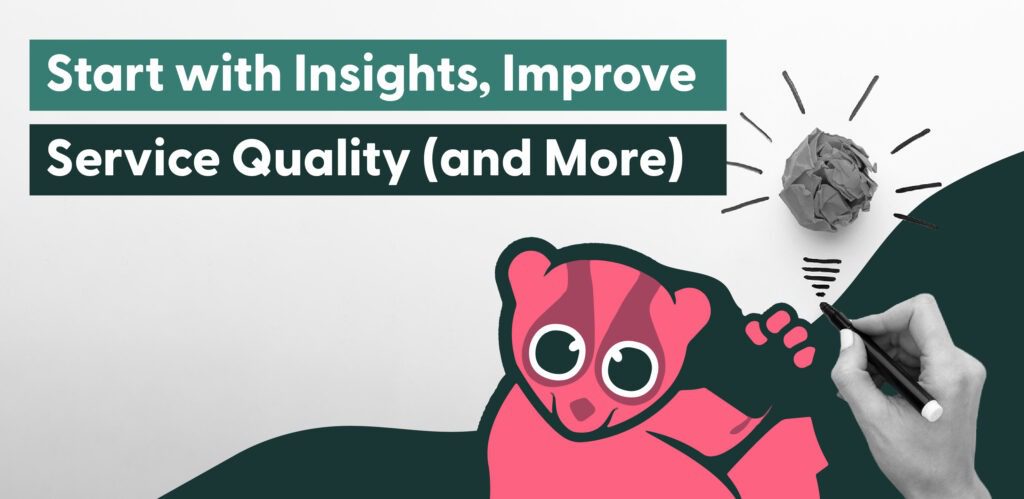
Before you start looking for automated quality software, you need to ask yourself if QA is something that you need in your contact center. The importance of QA depends on each individual organization’s perspective on customer experience.
I know the idea of not having a QA process may be shocking, but hear me out…
You can determine if you really need QA by gathering data from all your customer service interactions, which should show you where the biggest problems within your business lie.
Many businesses assume that improving their customer service through QA will fix their issues. However, you need to dig deeper than this to really understand the problems within your business that need improvement.
Are you making promises to your customers that you can’t achieve? Are your sales and marketing messages not aligned with your customer’s pain points? The right insights will help you identify these problems so you can take action to resolve them, leading to happier customers.
A conversational intelligence platform like Loris can give you access to valuable insights extracted from every customer interaction. These insights can show you exactly what needs your attention within your business to better your customer experience.
The platform also eliminates the need for a specific QA process and tool. Using AI, Loris automatically scores customer interactions and identifies the ones you should pay attention to. No more sampling or reading transcripts required!
It also scores your agents automatically and provides you with insights into where they need coaching to improve their performance.
Ready to See If Loris Is Right for Your Business?
Automated quality management provides opportunities for continuous improvement, more consistent agent performance, and an easy way to get insights from all your customer interactions.
Using an AI-enhanced conversational intelligence platform like Loris means you’re doing so much more than implementing a quality management process. You’re also getting insights into your business that you wouldn’t get anywhere else.
With the right insights, you can make improvements to your whole business, satisfy your customers, and provide a high-quality CX.
If you’d like to learn more about Loris, connect with one of our experts. We’ll show you how valuable the right insights can be.